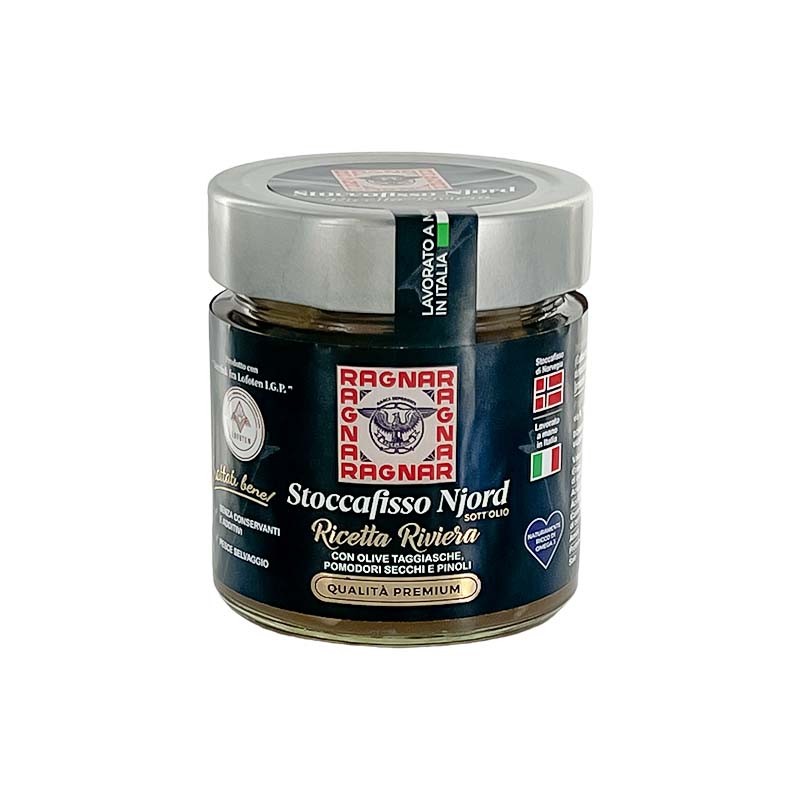





'Njord' stockfish in sunflower oil with Taggiasca olives, dried tomatoes and pine nuts, handmade in Italy and naturally rich of Omega-3.
Wild Fish and No Preservatives/Additives.
Fishing Method: Hooks and Longlines.
Ideal when combined:
Stoccafisso [Torrfisk fra Lofoten I.G.P] reidratato (Gadus morhua) 90%, olio di semi di girasole, olive taggiasche denocciolate [olive taggiasche, sale, acqua], pomodori essiccati [pomodori, sale], pinoli mediterranei, sale
Stockfish is one of the oldest fish preservation techniques, dating back to the 12th century in Norway. This method is all about letting the cod dry naturally in the open air. It needs the right weather and environment to work. The stockfish keeps its nutritional value because there's no salt and it dries slowly, so it becomes a fibrous product with a strong flavour. The woody texture of stockfish means it needs to soak for a long time before cooking, so the fish can rehydrate and become soft and tasty.
The history of stockfish is closely linked to European sailors of the past. They took it with them on long voyages because it kept for a long time without spoiling. This dried fish was a key source of protein for travellers and a staple food for coastal populations.
It may interest you
Our Njord stockfish in oil can be consumed directly after draining, but there are also some recipes that make this variety of fish even more versatile. Here are some:
Stockfish is particularly appreciated when cut into pieces and added to the sauce. After making the sauce, you can add a touch of spiciness, which perfectly matches the stockfish, to give the dish an extra flavor.
Today, stockfish is a prized ingredient in many regional Italian cuisines, where it is used in traditional dishes like stockfish all'anconetana. Its preparation requires specific culinary techniques to enhance its flavor and texture. For example, stockfish must be beaten and soaked for several days, changing the water frequently to remove any trace of drying and make it ready for cooking.
In the kitchen, stockfish is appreciated for its strong flavor and its ability to absorb the flavors of the ingredients with which it is prepared. It is often used in soups, stews, and salads, where its fibrous texture adds a unique dimension to the dishes. Despite its humble origins as a "poor fish," stockfish is now a symbol of tradition and quality, loved by gourmets for its versatility and authentic taste.
There are several varieties of stockfish, but the most common ones are the white stockfish from the species "Gadus Morhua" and the black stockfish from the species "Gadus Macrocephalus". We particularly consider the Tørrfisk fra Lofoten I.G.P stockfish of the highest quality. Additionally, you can see the differences it has with cod.
The term stockfish comes from the Norwegian word "stokfisk" which means fish stick. This is because stockfish was dried hanging on logs or sticks.